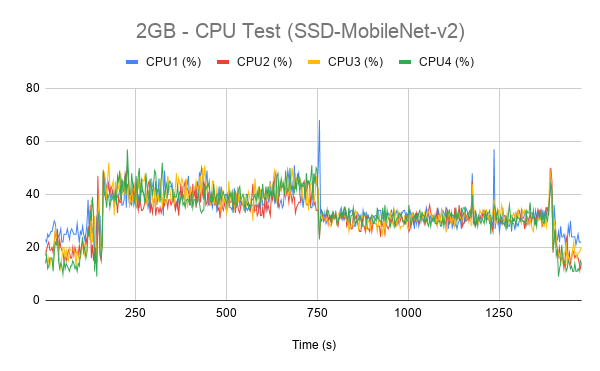Processor Performance: 5 Factors That Affect It.

Processor performance is a critical aspect of modern computing, impacting everything from basic tasks to intensive applications. In today's digital age, where computers and technology are integral to our daily lives, understanding the factors that influence processor performance is essential. Whether you're a tech enthusiast, a gamer, or a professional relying on high-performance systems, delving into these factors provides valuable insights into optimizing your computing experience.
The 5 Key Factors Influencing Processor Performance

The performance of a processor, often referred to as the Central Processing Unit (CPU), is determined by a multitude of factors. Here, we dissect these elements to offer a comprehensive understanding, enhancing your knowledge of the inner workings of your computer's brain.
1. Clock Speed
At the heart of processor performance lies clock speed, measured in gigahertz (GHz). It represents the number of cycles or instructions a processor can execute per second. A higher clock speed generally equates to faster processing, allowing the CPU to handle more tasks in a given time frame. For instance, a processor with a clock speed of 4.0 GHz can theoretically perform twice as many operations as one with a 2.0 GHz speed.
| Processor Model | Clock Speed (GHz) |
|---|---|
| Intel Core i9-13900K | 3.80 - 5.80 |
| AMD Ryzen 7 5800X3D | 3.80 - 4.70 |

However, it's important to note that clock speed is just one piece of the puzzle. Other factors, like the processor's architecture and the efficiency of its instruction execution, also play crucial roles.
2. Core Count and Threading
The number of cores in a processor significantly impacts its performance. Each core acts as an independent processor, allowing for simultaneous execution of tasks. Modern processors often feature multiple cores, with some high-end models boasting up to 96 cores for extreme workloads. This multi-core design enables better multi-tasking and improved performance in applications that can utilize multiple threads.
Additionally, hyper-threading, a technology employed by Intel, allows each core to execute two threads simultaneously. This effectively doubles the number of threads a processor can handle, enhancing its performance in multi-threaded applications. For example, a quad-core processor with hyper-threading can handle up to eight threads concurrently.
| Processor | Cores | Threads |
|---|---|---|
| AMD Ryzen 9 7950X | 16 | 32 |
| Intel Core i7-13700K | 16 | 24 |
The optimal core count depends on the user's specific needs. For general computing and light multitasking, a quad-core processor is often sufficient. However, content creators, gamers, and professionals in fields like video editing or scientific computing may benefit from higher core counts for more efficient parallel processing.
3. Cache Memory
Cache memory is a high-speed storage area located within or close to the processor. It stores frequently accessed data and instructions, reducing the time required to fetch information from the main memory (RAM). A well-designed cache hierarchy, consisting of L1, L2, and L3 caches, can significantly boost performance by providing faster access to critical data.
The size and speed of these caches are crucial. Larger caches can hold more data, reducing the need to access slower main memory. For example, a processor with 32MB of L3 cache can store a substantial amount of frequently used data, enhancing overall performance.
| Processor | L3 Cache (MB) |
|---|---|
| Intel Xeon W-3300 | 30 |
| AMD Ryzen Threadripper Pro | 128 |
The efficiency of cache memory is determined by its hit rate, which measures the proportion of memory accesses that find the desired data in the cache. A higher hit rate indicates better performance, as the processor spends less time waiting for data retrieval.
4. Architecture and Microarchitecture
The architecture of a processor refers to its design and layout, including the arrangement of cores, caches, and other components. It dictates how the processor executes instructions and manages data flow. Modern architectures, like Intel’s Golden Cove and AMD’s Zen 4, offer enhanced performance through improvements in instruction decoding, out-of-order execution, and power efficiency.
Microarchitecture, a subset of architecture, focuses on the detailed design of individual components within the processor. It influences the efficiency of instruction execution, branching, and data handling. Microarchitectural enhancements can lead to significant performance boosts without increasing clock speed or power consumption.
For example, Intel's Willow Cove microarchitecture, used in the 11th Gen Core processors, introduced new features like improved AI acceleration and faster memory access, enhancing overall performance.
5. Power and Thermal Considerations
Processor performance is closely tied to its power consumption and thermal characteristics. High-performance processors often require substantial power, which can lead to increased heat generation. Effective cooling solutions, such as liquid cooling or advanced heatsinks, are crucial to maintain optimal performance and prevent thermal throttling.
Thermal throttling is a protective measure where the processor reduces its clock speed to manage heat, potentially impacting performance. Therefore, a balance must be struck between performance and power efficiency to ensure optimal long-term operation.
| Processor | TDP (Thermal Design Power) (W) |
|---|---|
| Intel Core i9-12900KS | 150 |
| AMD Ryzen 9 7900X | 170 |
In conclusion, understanding these five factors provides a comprehensive overview of processor performance. Each element plays a unique role, and optimizing their interplay is key to achieving the best possible performance from your computing hardware.
How does cache memory improve performance?
+Cache memory stores frequently accessed data and instructions, allowing the processor to retrieve them quickly. This reduces the time spent waiting for data from the main memory, leading to faster overall performance.
What is the impact of hyper-threading on performance?
+Hyper-threading allows each core to execute two threads simultaneously, effectively doubling the number of threads a processor can handle. This can lead to significant performance improvements in multi-threaded applications.
How does architecture influence processor performance?
+Processor architecture dictates the layout and design of the CPU, including the arrangement of cores, caches, and other components. Modern architectures offer enhancements in instruction decoding, out-of-order execution, and power efficiency, leading to improved performance.



